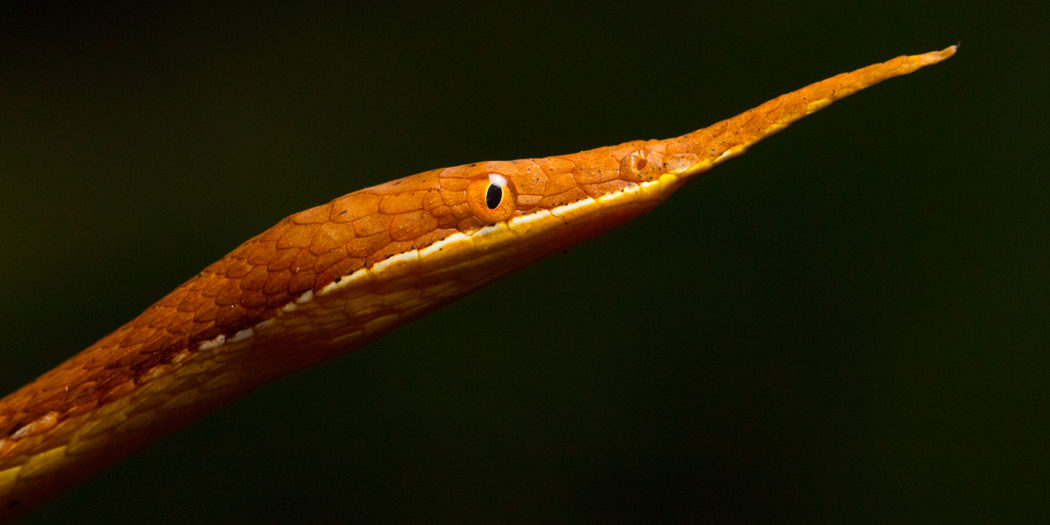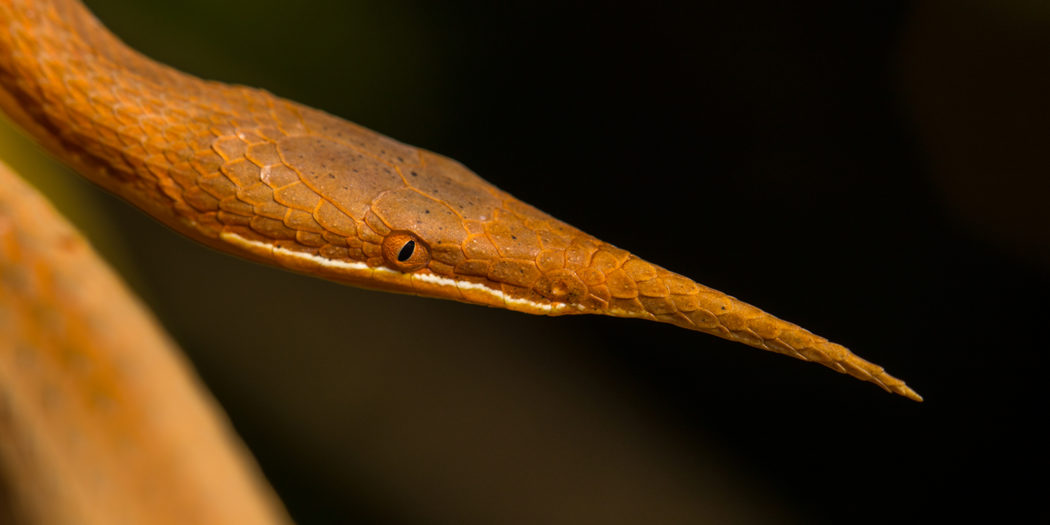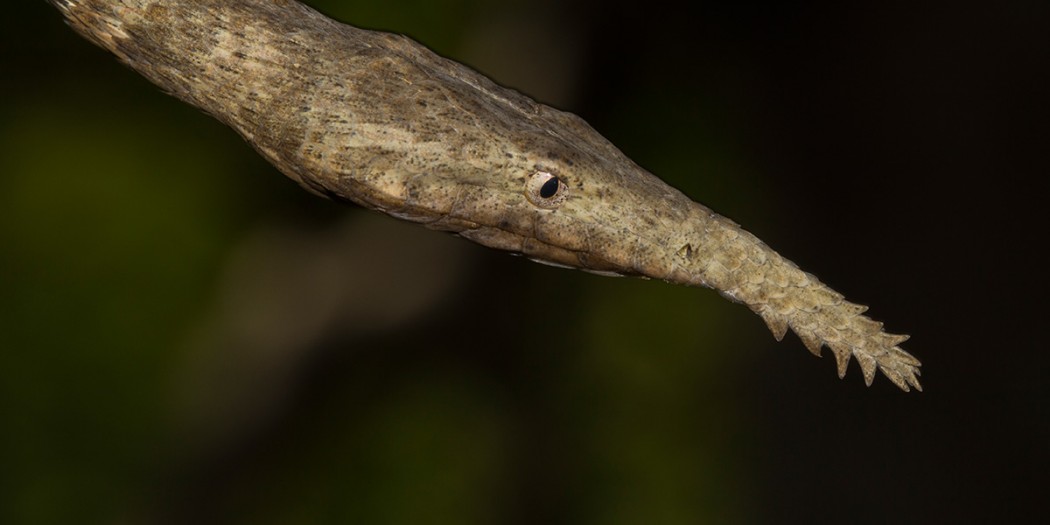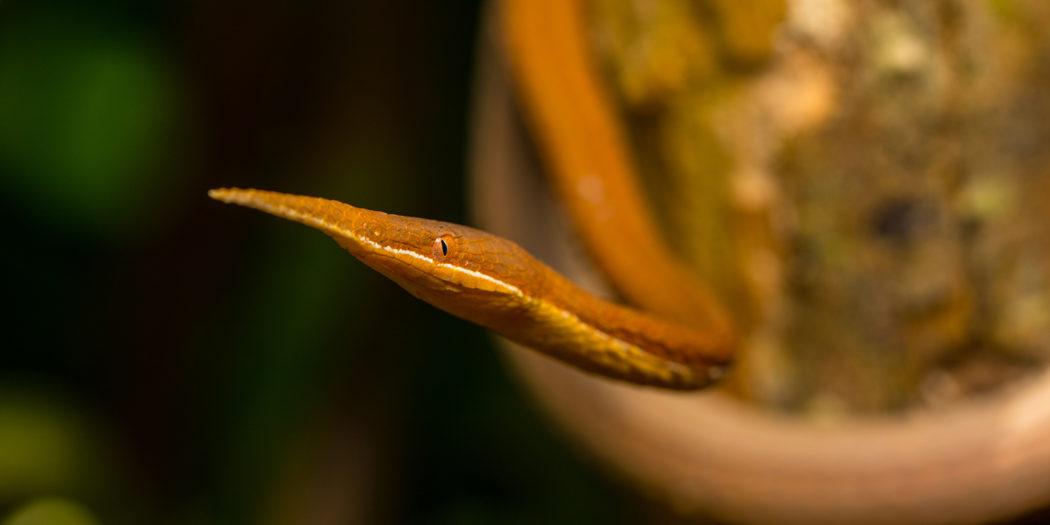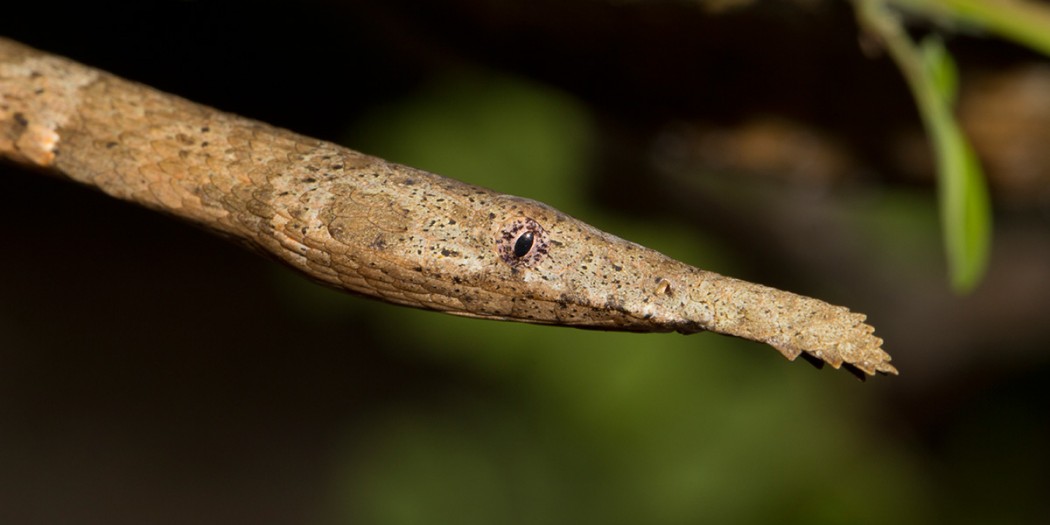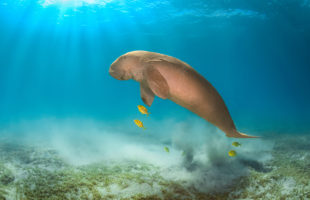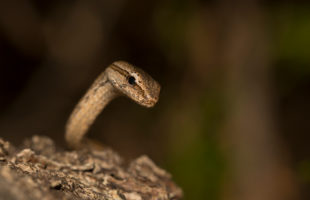A nose that somehow resembles a frayed leaf and can be bent, and an elongated body: these are the most outstanding characteristics of the Langaha madagascariensis, one of many bizarre animals in Madagascar. The purpose of the bizarre nasal process has not yet been clarified. In males, it looks more like a Pinocchio nose than a leaf.
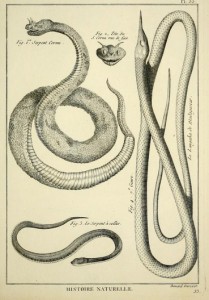
The name of the species goes back to the French priest Pierre Joseph Bonnaterre, who besides his spiritual ministry also worked as a zoologist at the Paris Museum. Many preparations from Madagascar were found there, including a leaf-nosed snake. Bonnaterre described the snake in 1790 along with more than 200 other new species. But even then he found it so strange that he put it in its own genre, Langaha. One finds leaf-nosed snakes scattered at different places Madagascar, above all however in the rain-forests of the north of the island into the dry-forests of the middle southwest into. The leaf-nose snake has even conquered islands like Nosy Be or Nosy Boraha (St. Marie). Whether it is threatened in spite of its widespread distribution, however, nobody knows. Sufficient data is simply missing for a threat classification on the IUCN red list.
The leaf-nosed snake is perfectly adapted to the way of life on trees and shrubs: It is slim, up to 1.20 m long and consists almost exclusively of muscles. The males are a bit more colourful with a reddish brown back and yellow belly, while the females are mainly brown and beige in camouflage, while during the day the leaf-nosed snake rests in the branches – thanks to its slender body it can easily be confused with a branch. Only at dusk does it become active and ambushes frogs, smaller reptiles or, rarely, birds. When the prey is only a few centimetres before the leaf-nosed snake, it attacks it at lightning speed. Nose snakes are not dangerous for humans, but have venom fangs at the back of the upper jaw. In humans, their venom, if you do not react allergically, is only enough for swelling and pain similar to those of a wasp sting. And even for this the snake has to chew a little on its victim and literally massage in the venom. For the average traveller the animals are therefore largely harmless, especially as they are rather quiet and less aggressive. For small prey animals such as geckos or Madagascar iguanas, however, the poison is deadly, and these animals eventually end up in the stomach of the snake.
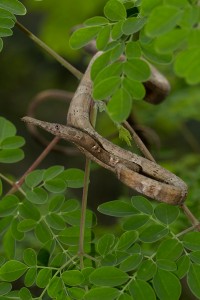
At the beginning of the rainy season the males look for females to mate with. A female lays between five and ten eggs per clutch, and she can produce several of them in each rainy season. The soft-shelled, elongated eggs are laid glued together in the foliage and are no longer noticed by the female. After approximately two months, the young leaf-nosed snakes hatch in the darkness of the night. During hatching, the name-giving nasal process is still close to the face and must first be “set up” within the next 36 hours. It is believed that this makes it easier for snakes to use their egg teeth to scratch the shell and thus to hatch.
The small leaf-nosed snakes weigh barely two grams after hatching, but immediately feed themselves independently and protect themselves from larger snakes and prey grabs by staying on particularly thin branches. Already as young animals, leaf-nosed snakes show a peculiar resting behaviour: They hang upside down from a branch, and then resemble very much the long seeds of some native plants in Madagascar. However, the exact purpose of this behaviour is as yet unexplored as is the peculiar nasal process.
To see Langaha madagascariensis, the national parks Ankarafantsika, Lokobe und Zombitse-Vohibasia and the reserves Kirindy and Akanin’ny Nofy are well suited. But you will need a little patience and a good guide, because the camouflage of the leaf snake is really amazing.
 MADAMAGAZINE Your Magazine about Madagascar
MADAMAGAZINE Your Magazine about Madagascar
